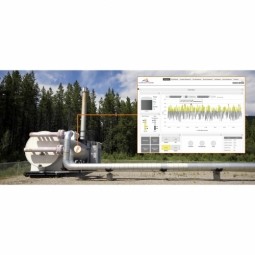
Track & Trace of Assets
Track and trace systems provide real-time or periodic updates for the current and historical locations of Containers, vehicles, or other property. Solutions can apply reckoning and reporting of the position of vehicles and Containers that store the tracked property of concern. For example, if it is known the one thousand objects are stored in a Container, it is more cost effective to track the Container than each individual object. However, high value individual objects can also be monitored directly. Wireless tags can be attached to objects with fixed reference points receiving wireless signals from tags to determine their location, as when a pallet is loaded onto a truck. Alternatively, GPS or another technology can track the object using satellite or cellular networks. Examples of real-time locating systems include Tracking products through an assembly line, locating pallets of merchandise in a warehouse, and Tracking Containers as they move across warehouses. The physical layer is usually some form of Radio Frequency communication, but some systems use optical or acoustic technology.
- Automotive
- Construction & Buildings
- Discrete Manufacturing
- Maintenance
The track and trace solutions market is projected to reach USD 3.93 billion by 2023 from USD 1.65 billion in 2018, at a CAGR of 18.9%.
Source: Markets & Markets
Enhanced Asset Visibility: Implementing a robust track and trace system enables businesses to gain real-time visibility into the location, status, and condition of assets throughout their lifecycle. This enhanced visibility allows for better decision-making, improved operational efficiency, and optimized asset utilization.
Improved Supply Chain Management: Track and trace capabilities facilitate seamless monitoring of assets as they move through the supply chain, from production facilities to distribution centers and end customers. By accurately tracking the movement of assets, businesses can streamline logistics, reduce lead times, and minimize inventory holding costs.
Compliance and Risk Mitigation: Effective track and trace solutions help businesses comply with regulatory requirements and industry standards related to asset management and product safety. By maintaining accurate records of asset movements and transactions, organizations can mitigate risks associated with counterfeiting, theft, and unauthorized tampering.
Supply Chain Managers: Supply chain managers are key stakeholders responsible for overseeing the implementation and operation of track and trace systems. They rely on real-time asset tracking data to optimize inventory levels, monitor shipment progress, and identify potential bottlenecks or disruptions in the supply chain.
Logistics Providers: Logistics providers play a crucial role in executing track and trace processes, including the physical handling, transportation, and storage of assets. They leverage track and trace technologies such as barcode scanners, RFID tags, and GPS devices to ensure accurate and timely asset tracking across various transportation modes and storage facilities.
Regulatory Authorities: Regulatory authorities are stakeholders with an interest in ensuring compliance with laws and regulations governing asset management, product labeling, and traceability. They may mandate the use of track and trace systems in certain industries to safeguard public health, prevent counterfeiting, and facilitate product recalls if necessary.
Barcode and RFID Technologies: Barcode labels and RFID tags are commonly used technologies for asset tracking and identification. Barcodes are cost-effective and widely adopted for capturing static data, while RFID tags offer the advantage of wireless, automated data capture and can be read from a distance without line-of-sight.
GPS and Geolocation Systems: GPS (Global Positioning System) and geolocation systems provide real-time location tracking capabilities for assets in transit or in remote locations. These systems leverage satellite signals and cellular networks to determine the precise geographic coordinates of assets and transmit location data to centralized tracking platforms.
Asset Identification and Serialization: Track and trace systems rely on unique identifiers and serialization codes assigned to individual assets or product units. These identifiers, such as barcodes, QR codes, or RFID tags, are scanned or read at various checkpoints along the supply chain to capture relevant data points and update the asset's tracking record.
Location and Movement Data: Track and trace solutions capture location and movement data in real time, allowing stakeholders to monitor the progress of assets as they move from one location to another. This data includes information on pickup and delivery times, transit routes, storage facilities, and any deviations from the planned itinerary.
Technology Infrastructure: Deployment of track and trace systems requires investment in appropriate technology infrastructure, including hardware devices (e.g., scanners, readers, sensors), communication networks (e.g., RFID, GPS, cellular), and software platforms (e.g., asset tracking software, enterprise resource planning systems).
Integration with Existing Systems: Track and trace solutions need to be integrated with existing enterprise systems such as inventory management, warehouse management, and ERP systems to ensure seamless data exchange and interoperability. This integration may involve customizing software interfaces, establishing data sharing protocols, and implementing middleware solutions.
Case Studies.







